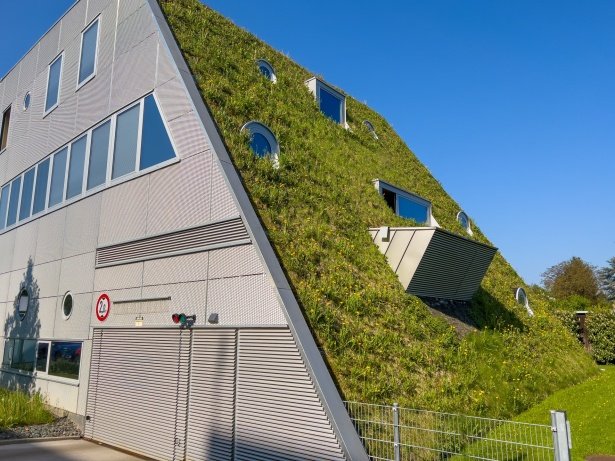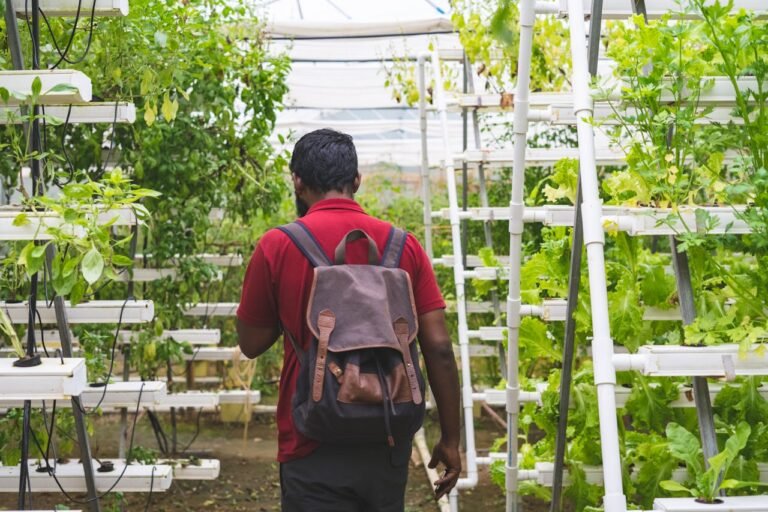10 Farm Stays That Teach, Taste and Restore — And Why They Matter
Farm stays have quietly shifted from niche curiosities to a meaningful chapter in travel and rural resilience. They combine tourism, food, and land stewardship: city families trade screens for farm chores for a few days; chefs tie menus directly to the soil they visit; and farmers find a second income that keeps fields in production. According to the 2022 U.S. Census of Agriculture and follow-up analyses, agritourism activity has grown in recent census cycles and generated measurable revenue for farm operators.
Part of the appeal is obvious: time spent around nature is good for people. A comprehensive scoping review of nature’s impact on health found that nearly all studies reviewed showed improved mental-health outcomes after contact with nature — a powerful scientific underpinning for why guests come to farms to unwind and reset.
Market watchers also note rapid growth: recent market reports estimate the agritourism sector as a multi-billion dollar market with double-digit growth projections across the next decade — evidence that farm hospitality isn’t a fad but a sector investors and policymakers are watching.

In This Article
- Ten Farm Stays and Why They Work
- 1. Blackberry Farm, Tennessee
- 2. SingleThread Farm & Inn, Healdsburg, California
- 3. Babylonstoren, Franschhoek, South Africa
- 4. Finca La Donaira, Andalucia, Spain
- 5. The Newt in Somerset, UK
- 6. Wildflower Farms (Auberge Resorts), Hudson Valley, NY
- 7. Leaping Lamb Farm / FarmStay USA, Oregon
- 8. Dogwood Hills / Farm Stay USA Examples, Arkansas and Elsewhere
- 9. Le Barn, Bonnelles, France (from European agritourism lists)
- 10. A Tasmanian Farmstay
- What Research and Hosts Tell Us
- How to Choose a Farm Stay and Simple Steps for Hosts
- Conclusion
Ten Farm Stays and Why They Work
1. Blackberry Farm, Tennessee
More than a luxury retreat, Blackberry Farm integrates a working garden, local food, and outdoor activity into a hospitality product that supports its rural community and staff training programmes. Guests come for culinary excellence and leave with a clearer idea of where their food comes from; the family behind the property emphasises stewardship and community in public statements. This blend of hospitality and farming makes it a model for how high-end farm stays can funnel money back into local supply chains.

2. SingleThread Farm & Inn, Healdsburg, California
A Michelin-starred restaurant with on-site lodging, SingleThread runs a 24-acre farm that supplies the kitchen. The owners treat the property as a closed-loop system: food, compost and soil management are interwoven with guest education — they offer farm tours and seasonally guided meals. As a real-world example, SingleThread shows how culinary credibility can amplify a farm stay’s appeal and teach visitors about sustainable food systems.

3. Babylonstoren, Franschhoek, South Africa
This historic Cape Dutch farm became a destination because it set the garden and regenerative practices at the centre of the guest experience. The property’s garden-to-table restaurants, workshops and heritage tours connect visitors to landscape history while generating income for conservation efforts and local employment. Babylonstoren demonstrates that strong interpretive programming — not just nice rooms — turns a farm into a learning destination.

4. Finca La Donaira, Andalucia, Spain
An eco-retreat and working organic farm, La Donaira pairs luxury accommodation with equestrian activities, organic farming demonstrations and regenerative land management. Tourists come for quiet and cuisine sourced on site; the owners use guest fees to fund reforestation and soil work — a practical model for linking tourism revenue to ecological restoration.
5. The Newt in Somerset, UK
A large working estate reimagined as a public park, hotel and farming operation, The Newt illustrates how heritage estates can reinvent themselves around diversified farm income, seasonal produce, and community programming. The estate’s orchards, cider production and educational gardens give guests varied ways to engage with rural craft.

6. Wildflower Farms (Auberge Resorts), Hudson Valley, NY
A recent entry into the farm-retreat space, Wildflower Farms places biophilic design, foraging and nature-based wellness at the heart of guest offerings. The property shows how modern design and a strong wellness narrative attract a new class of guests who want both nature and high design.
7. Leaping Lamb Farm / FarmStay USA, Oregon
Scottie Jones’ Leaping Lamb Farm is a prime example of a small working farm that opened its gates to paying guests and found a lifeline. Jones has spoken about how on-farm lodging turned the bookkeeping from worry to stability — and created long-term repeat guests who return for lambing seasons and quiet stays. Her story is often cited in agritourism circles as a practical path from commodity farming to hospitality.

8. Dogwood Hills / Farm Stay USA Examples, Arkansas and Elsewhere
Several FarmStay USA members, like Dogwood Hills, started hosting visitors informally and then formalised offerings after guests expressed interest in helping with chores, participating in harvests, and learning culinary traditions. These grassroots examples reveal a replicable model: small capital outlay, strong on-site storytelling, and community networks for marketing.
9. Le Barn, Bonnelles, France (from European agritourism lists)
A modest French farmstay that highlights local food, riding and simple hospitality, Le Barn and similar properties show how modest operations can thrive by offering authentic, place-rooted experiences at affordable price points. European farmstays tend to emphasise family hospitality and seasonal menus, which suit guests who want slow travel.
10. A Tasmanian Farmstay
Tasmania’s farmstay scene demonstrates that farm stays do not need to be a single template; in regional areas, they deliver nature, animal encounters and local storytelling that directly support small communities and keep remote infrastructure viable. These regional examples are proof that agritourism can be scaled to local needs.
What Research and Hosts Tell Us
Hosts and researchers agree on two core benefits: economic diversification for farms, and measurable human well-being gains for guests. Farmers who add lodging, classes or hands-on experiences often report steadier cash flow and new markets for produce — a conclusion repeated in interviews with longstanding hosts and in extension publications. FarmStay operators like Scottie Jones have told reporters that without guest income, some farms might not have survived the last decade.
From the research side, a large UK study of nature’s effects on health found consistent improvements in self-reported health and well-being after nature contact (e.g., spending at least 120 minutes per week in nature), which provides an evidence base for why people report feeling calmer, more focused, and better rested after farm visits. Those physiological and psychological impacts are real reasons to build interpretive programming and safe outdoor activities into farm stays.
However, researchers also flag risks and cautions. Agritourism can strain water resources, create biosecurity questions for livestock, and require careful insurance and safety planning. Extension specialists and global reports emphasise the need for good planning: clear liability coverage, realistic workload expectations, and fair labour practices for seasonal staff. These operational realities matter most to hosts who turn the idea of a farm stay into a viable business.
Experts and commentators in hospitality also highlight a social trend: travellers want experiences with purpose. As Vogue and industry voices have noted, regenerative farming and wellness travel now overlap; guests seek both rest and meaning, and farms that can tell a strong stewardship story have an advantage. That’s why many successful properties pair conservation messages with genuine on-farm work.
How to Choose a Farm Stay and Simple Steps for Hosts
If you’re picking a farm stay, look for clear descriptions of guest activities, hygiene and animal-interaction rules, and honest photos showing the property. Ask whether food is sourced on site, whether hosts offer tours or hands-on options, and whether there are quiet hours and child-safety measures. These practical questions separate a weekend of accidental inconvenience from a true farm-based reset.
For hosts considering farm hospitality, start small: validate demand with occasional workshops or a single guest room, document robust safety and biosecurity protocols, and join a network like FarmStay USA to borrow marketing muscle. Focus on one or two signature experiences (lambing season, a harvest breakfast, a foraging walk) and build repeatable routines so small teams can run them without burnout. Practical business planning — insurance, simple accounting, and a channel mix that includes direct booking — is essential.
- Actionable checklist for guests: confirm animal-interaction rules in writing; pack clothes you can wash at the farm; plan for limited connectivity (if that’s part of the appeal); and tip for experiences that pair education with touchpoints such as a farm tour or farm-to-table meal.
- Actionable steps for hosts: write a short guest manual, test one new offering for a month, track incremental income, and collect guest feedback mapped to specific changes (meals, activity times, or staffing) to learn fast.
Conclusion
Farm stays are more than a feel-good tourist choice; they are practical strategies for rural resilience and public education. Well-run farm hospitality spreads income across supply chains, teaches guests where food comes from, and — backed by research on nature and health — offers legitimate wellbeing benefits. If you want to support this sector, book honestly (show up curious and ready to learn), buy the farm shop produce, and share stories that keep small host families in business.







